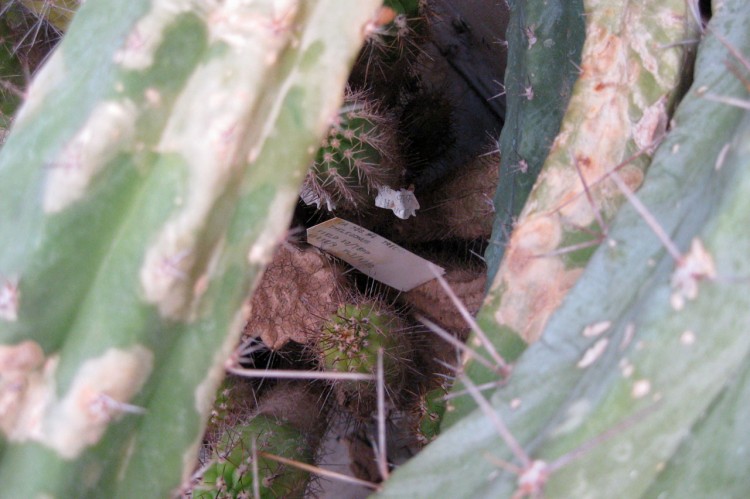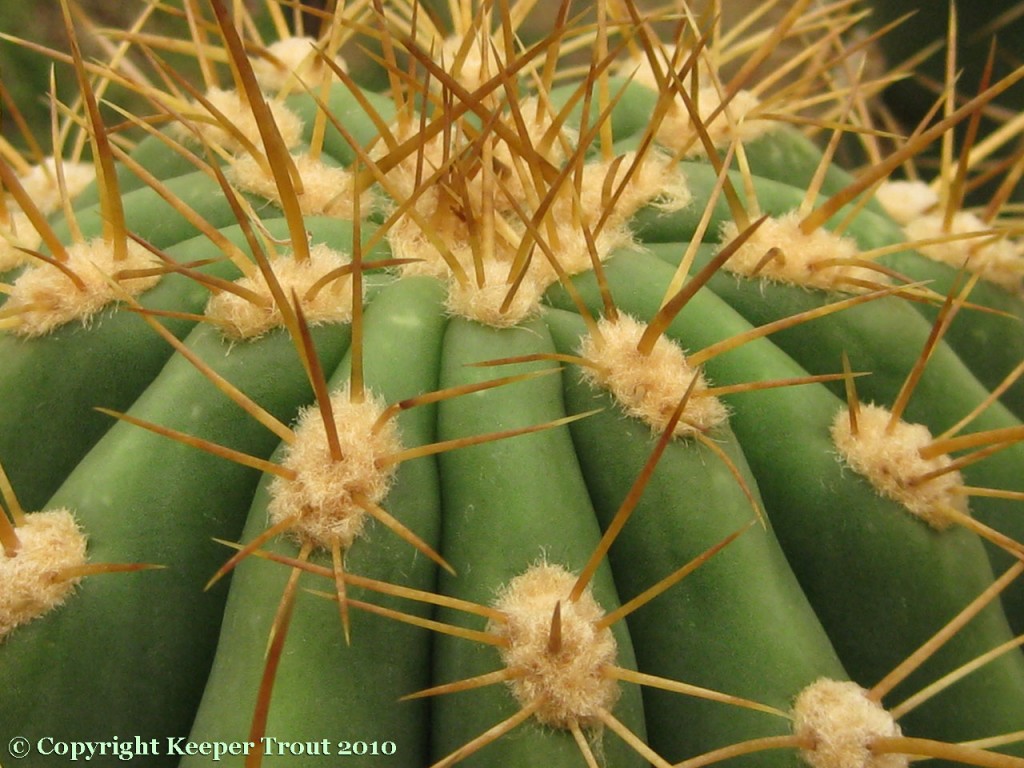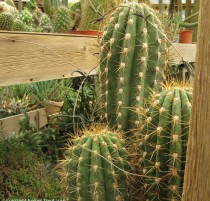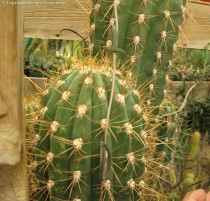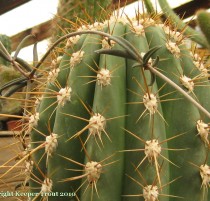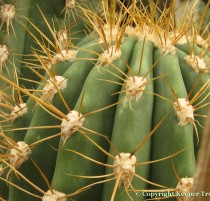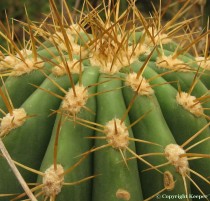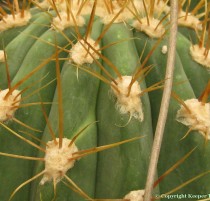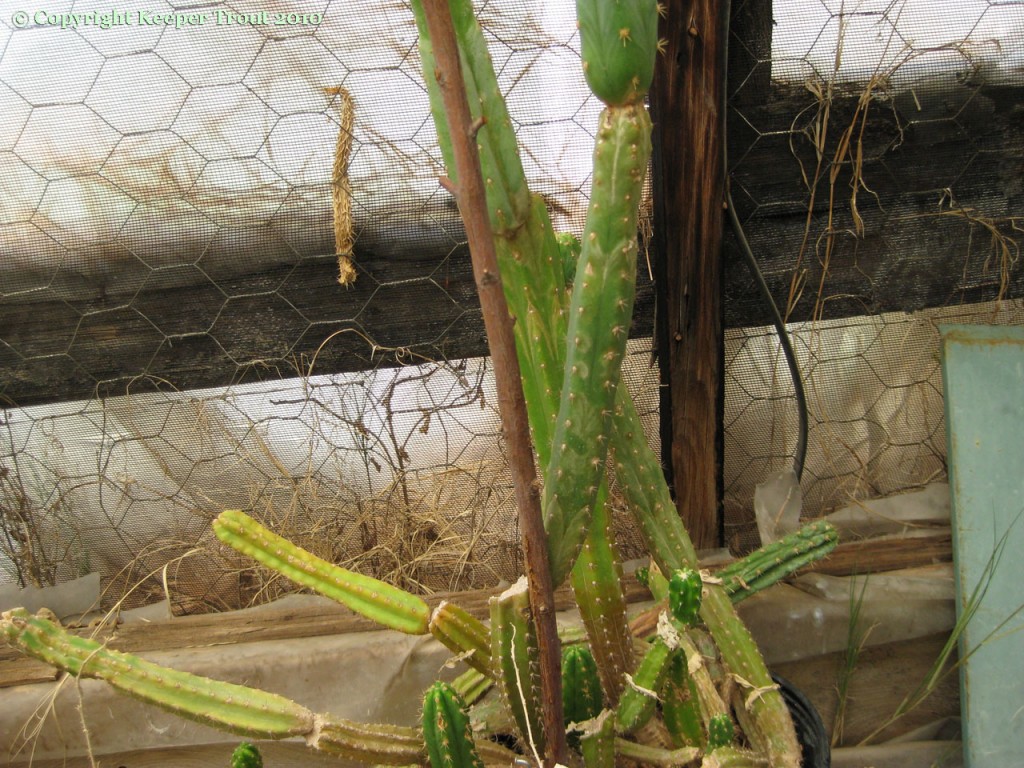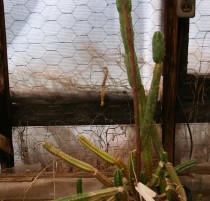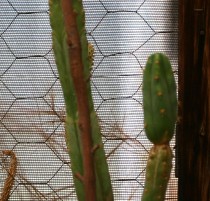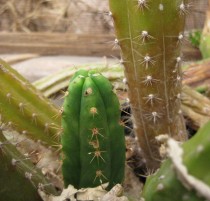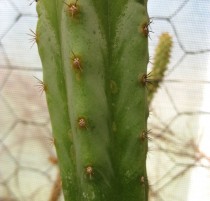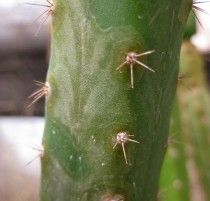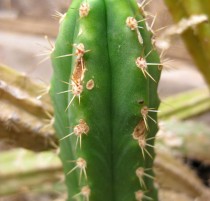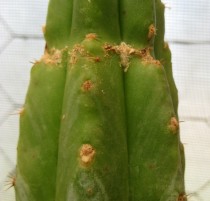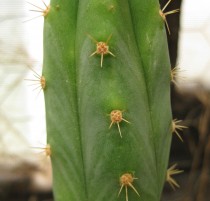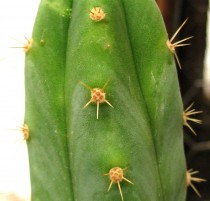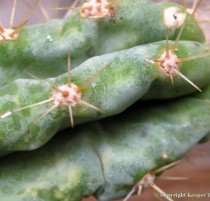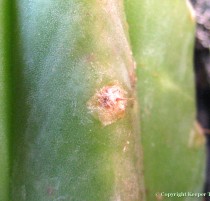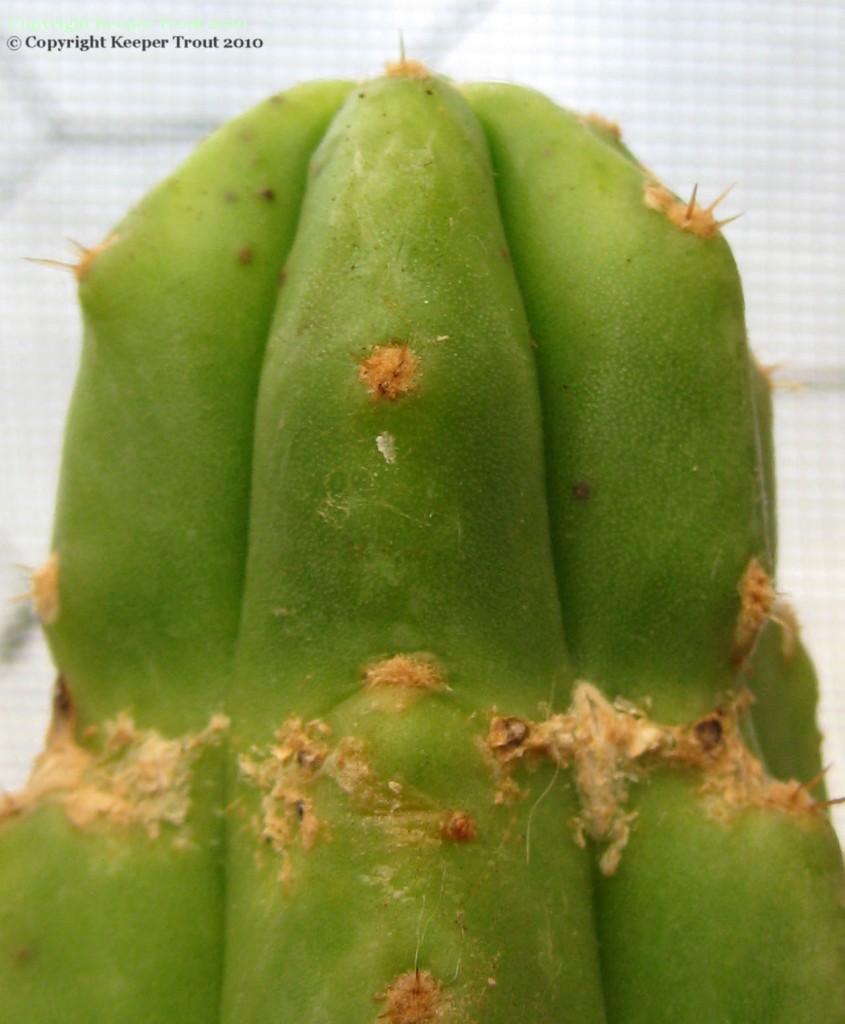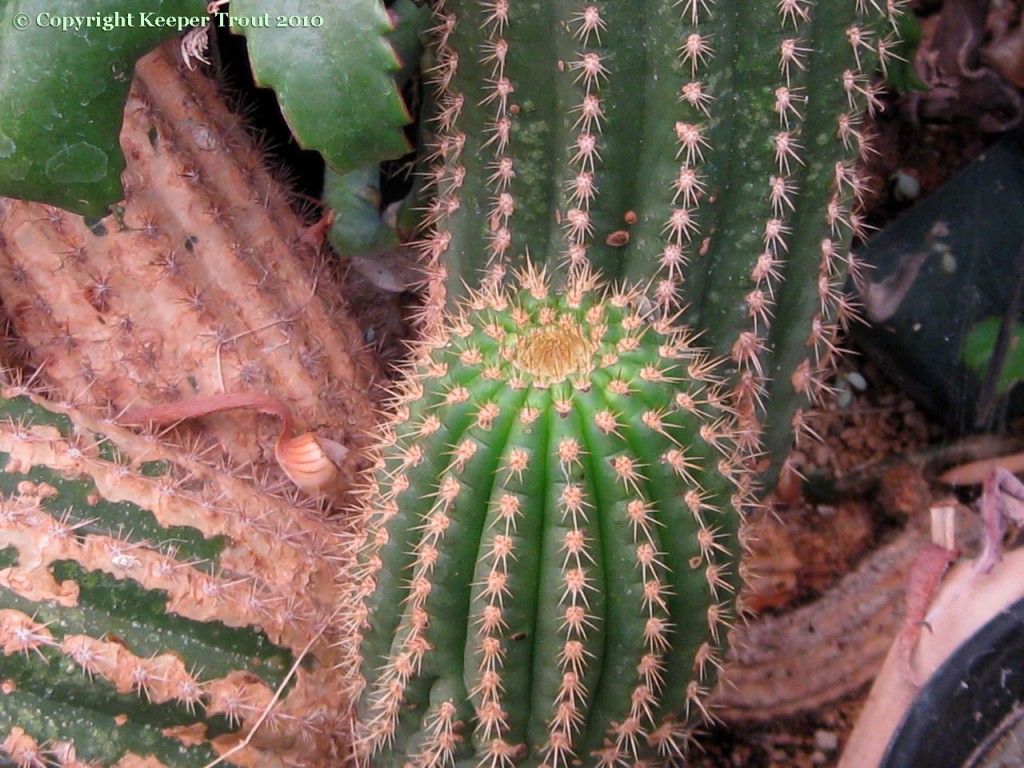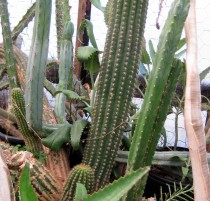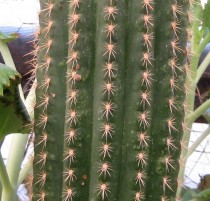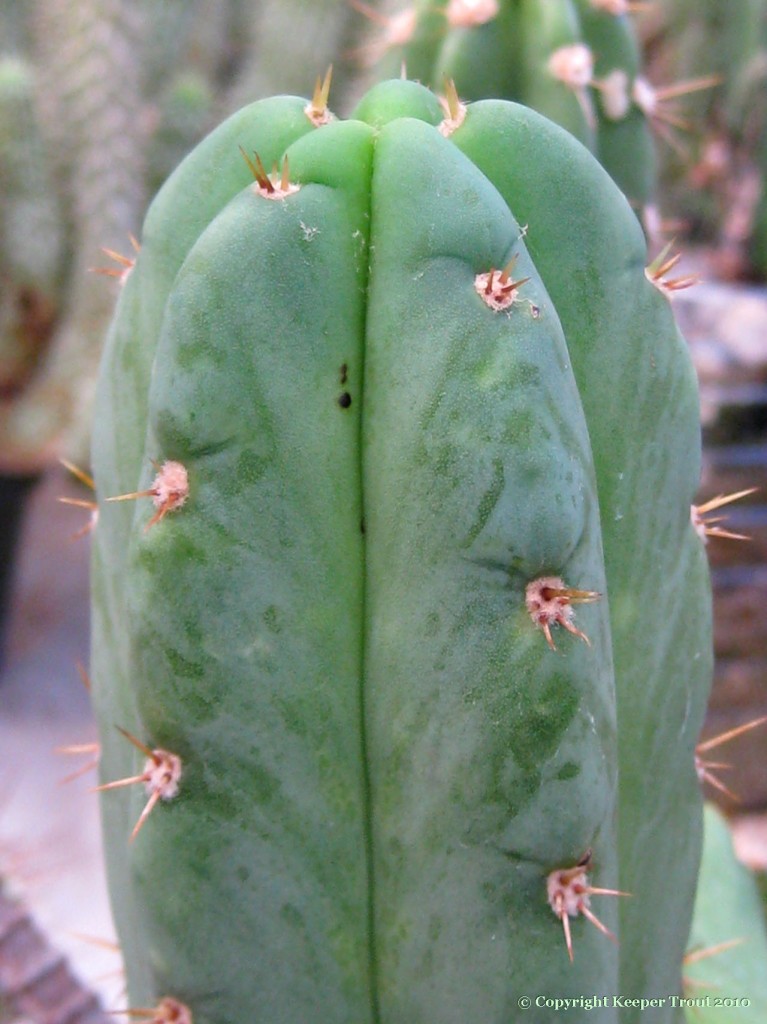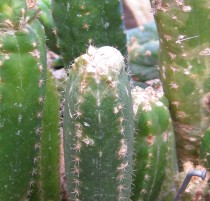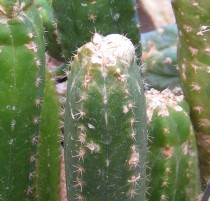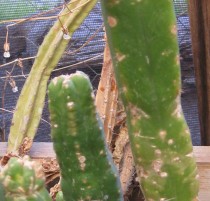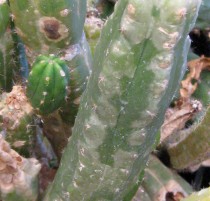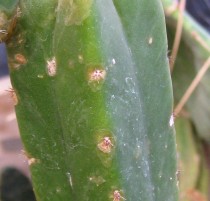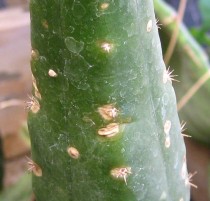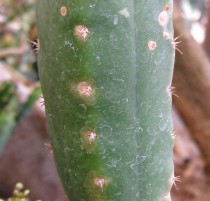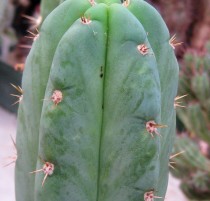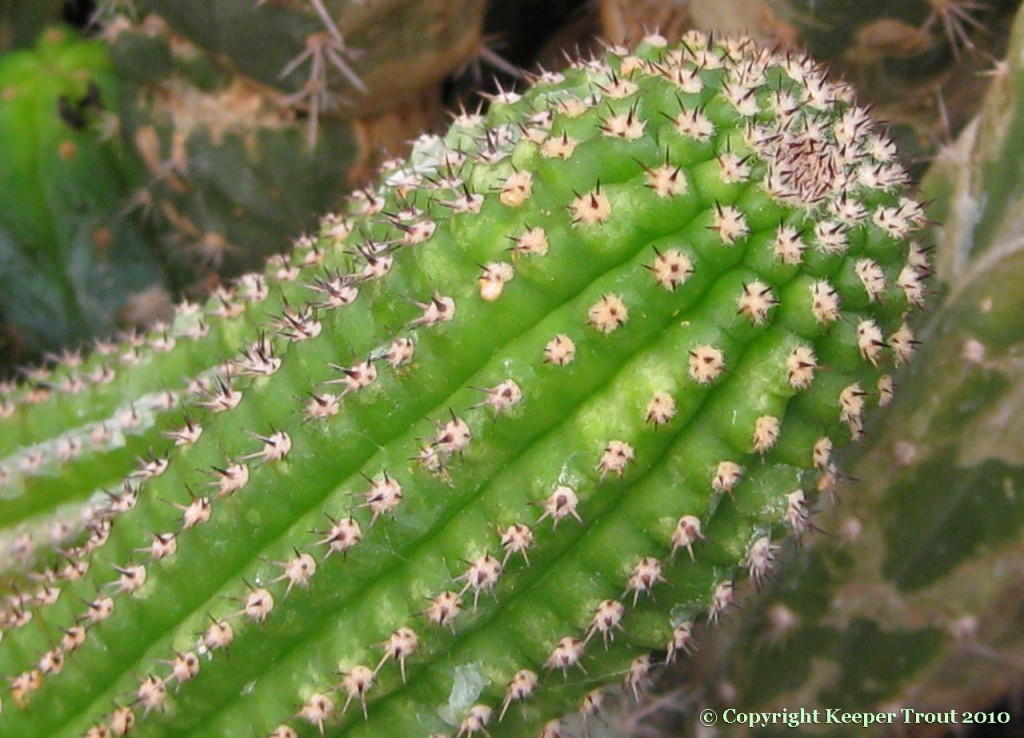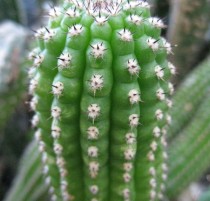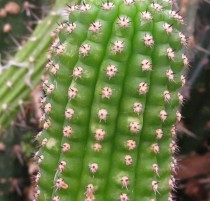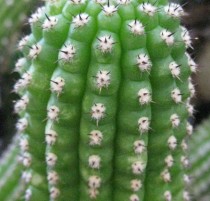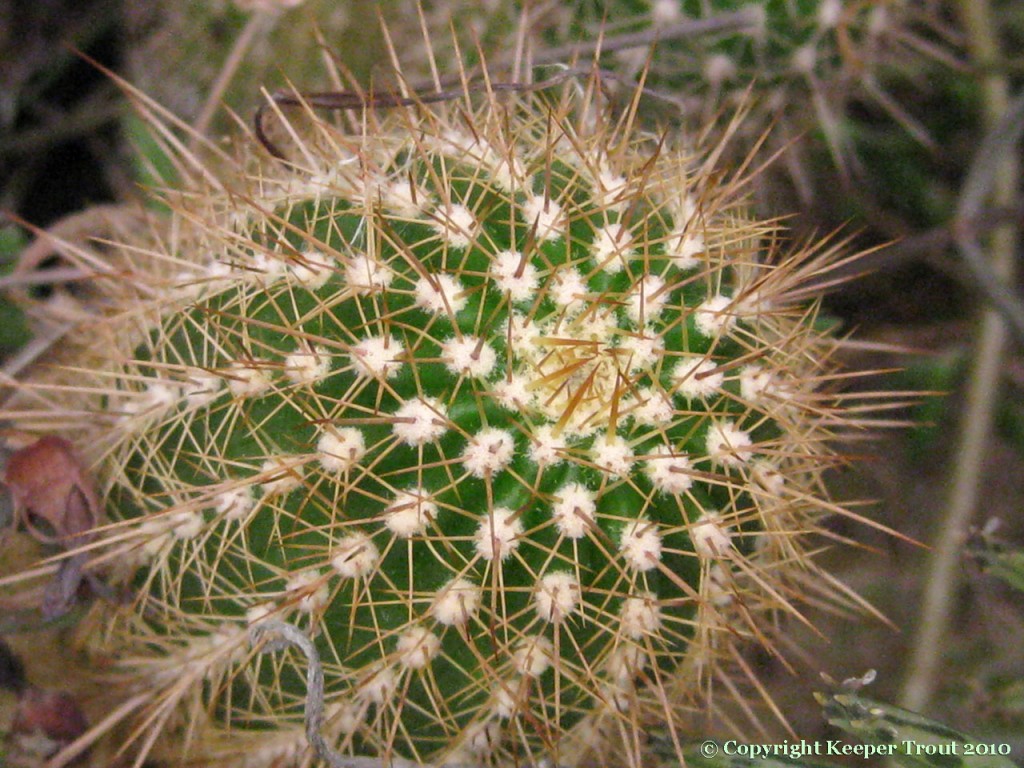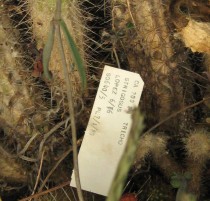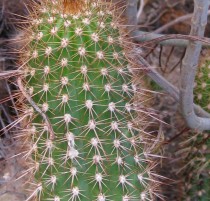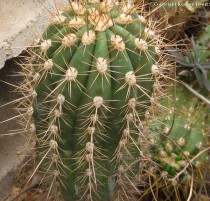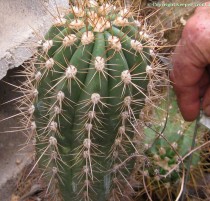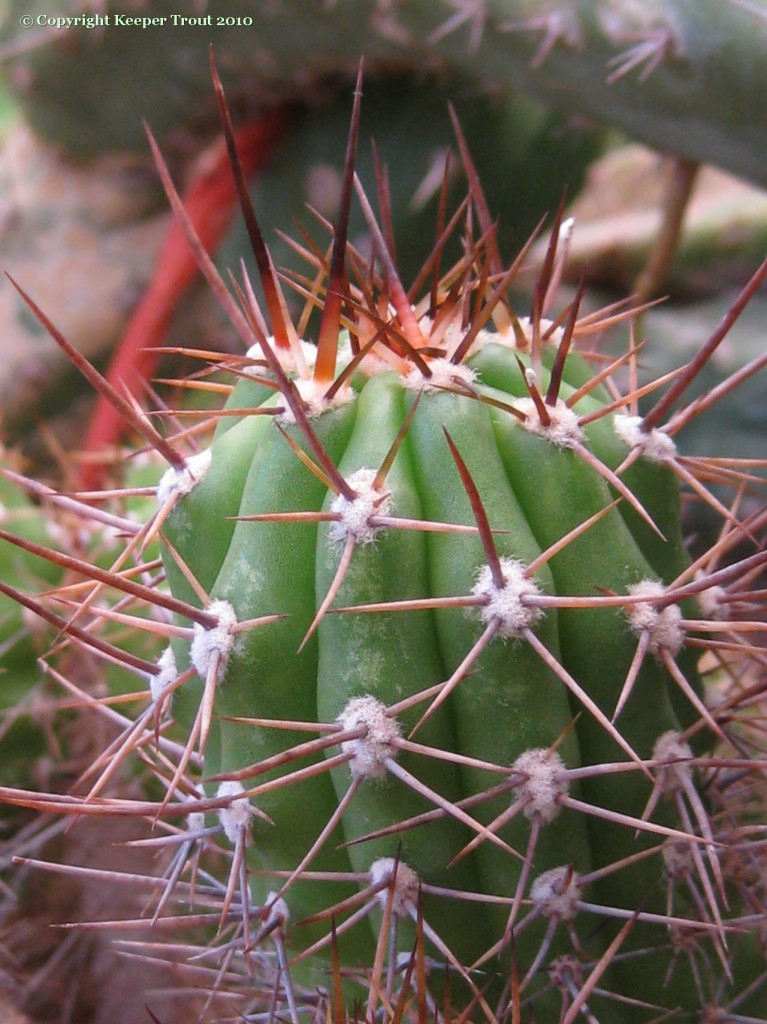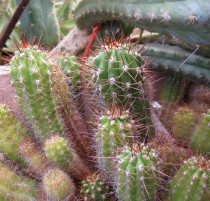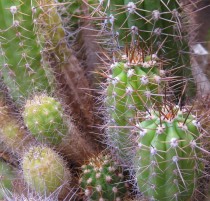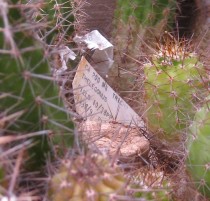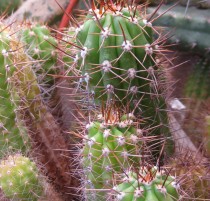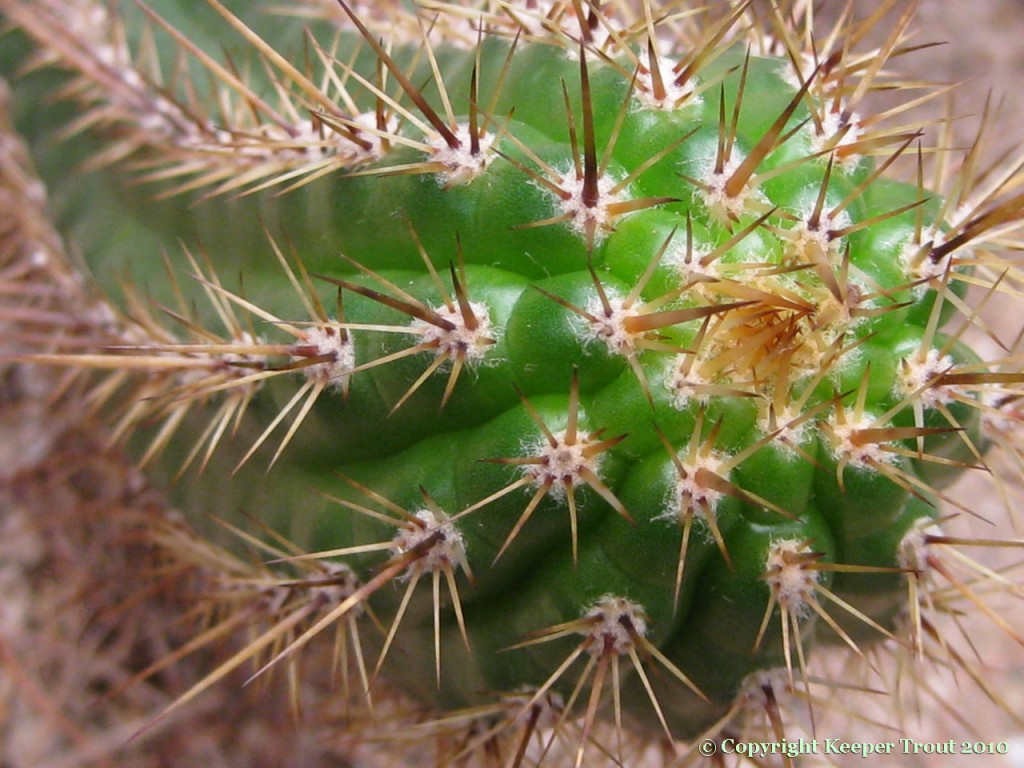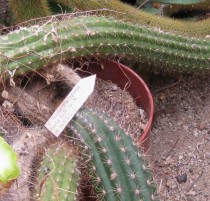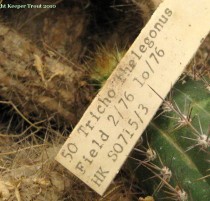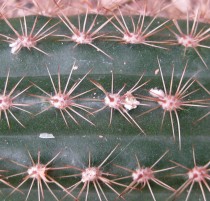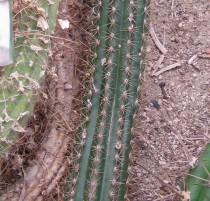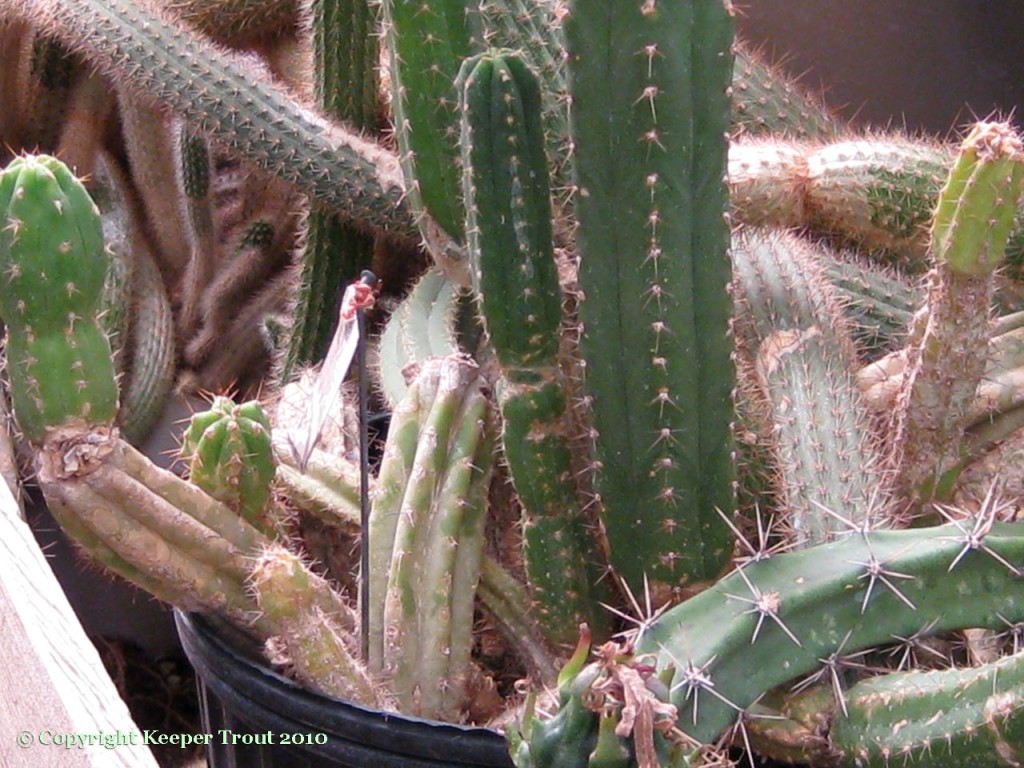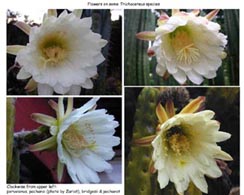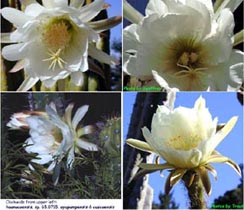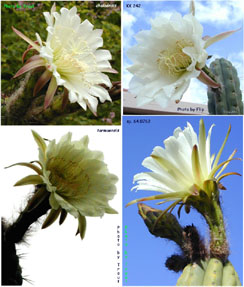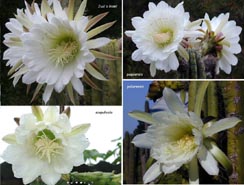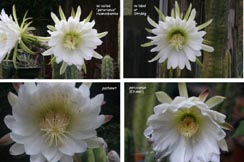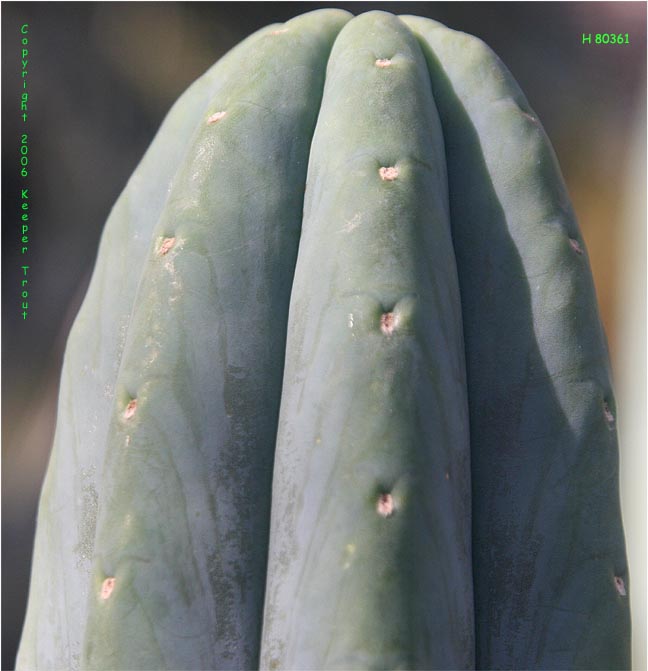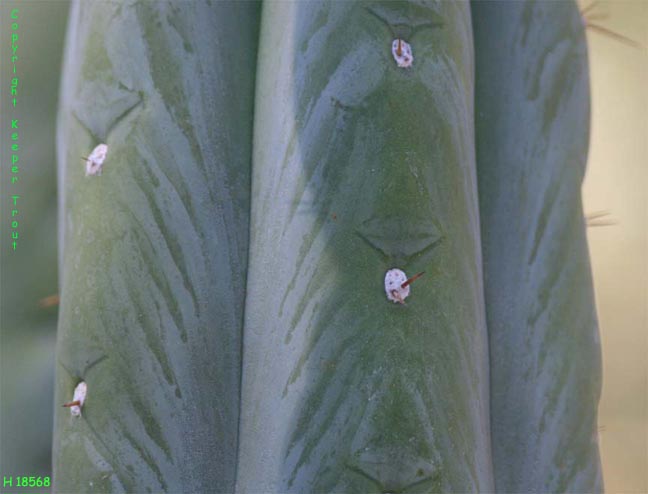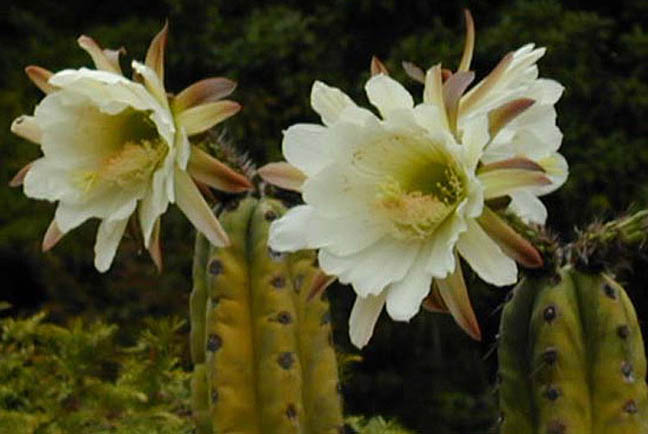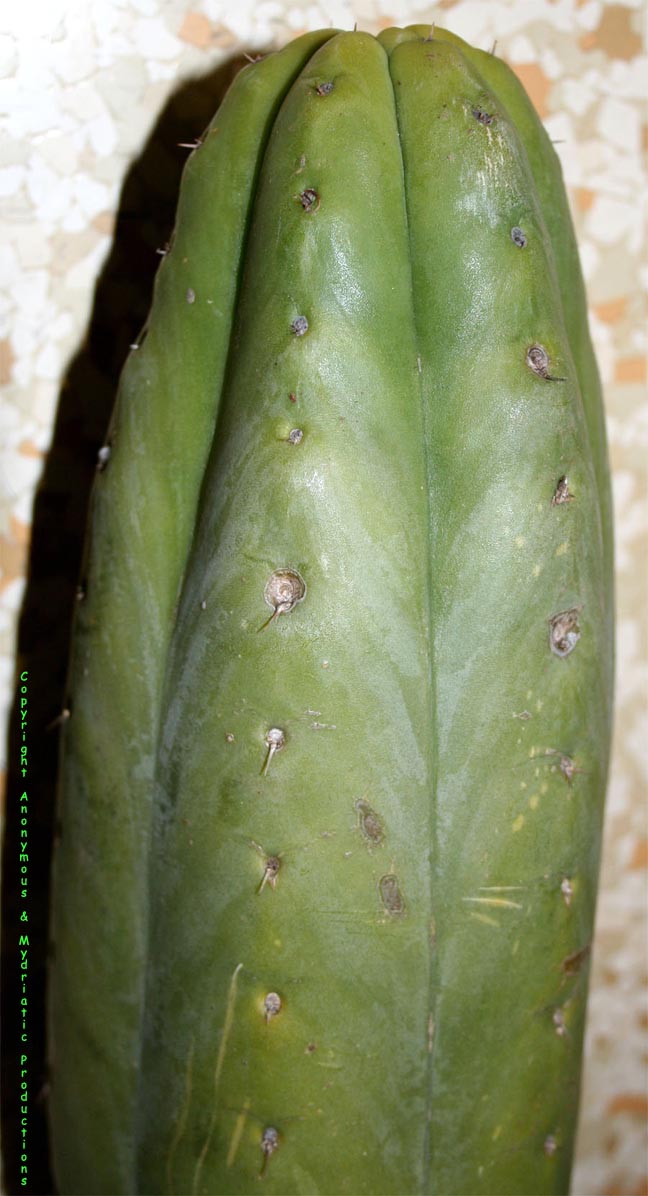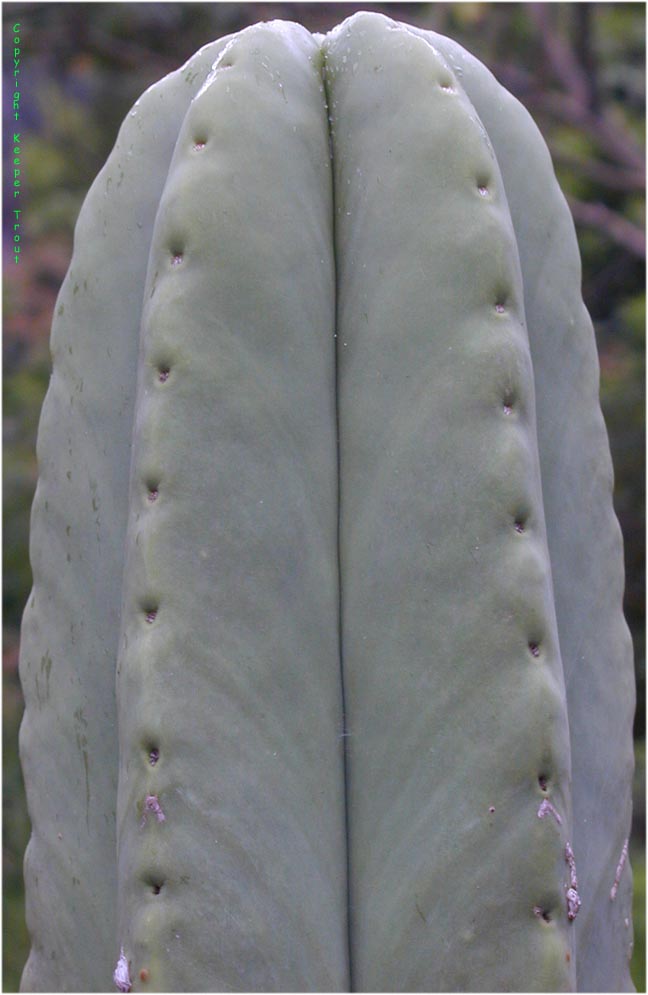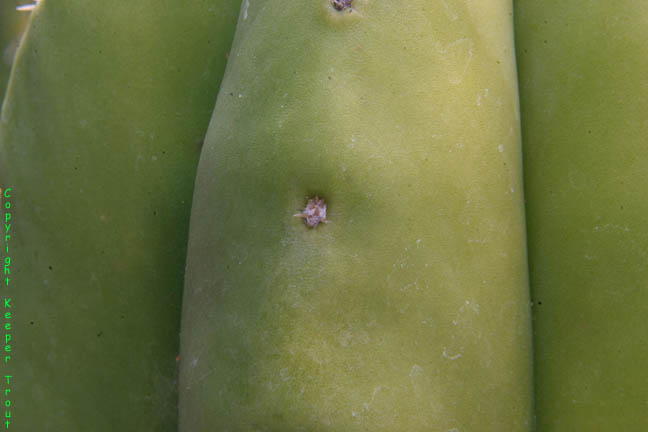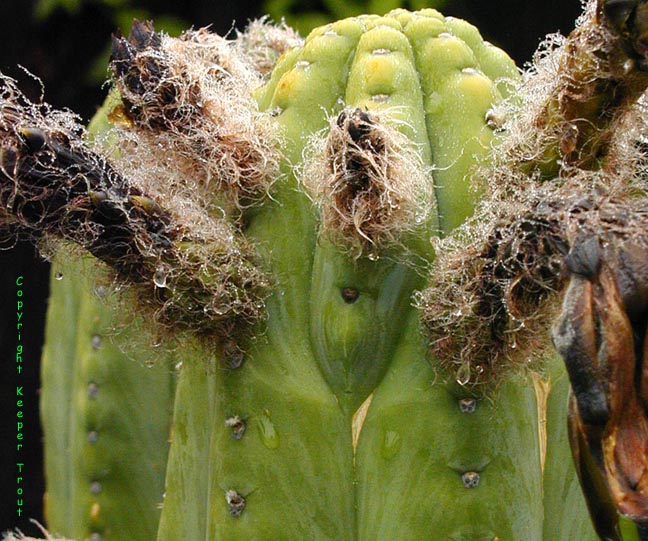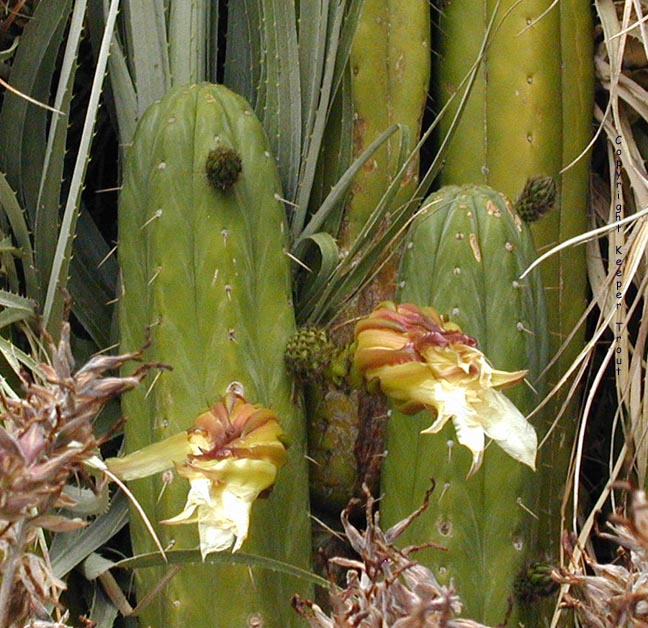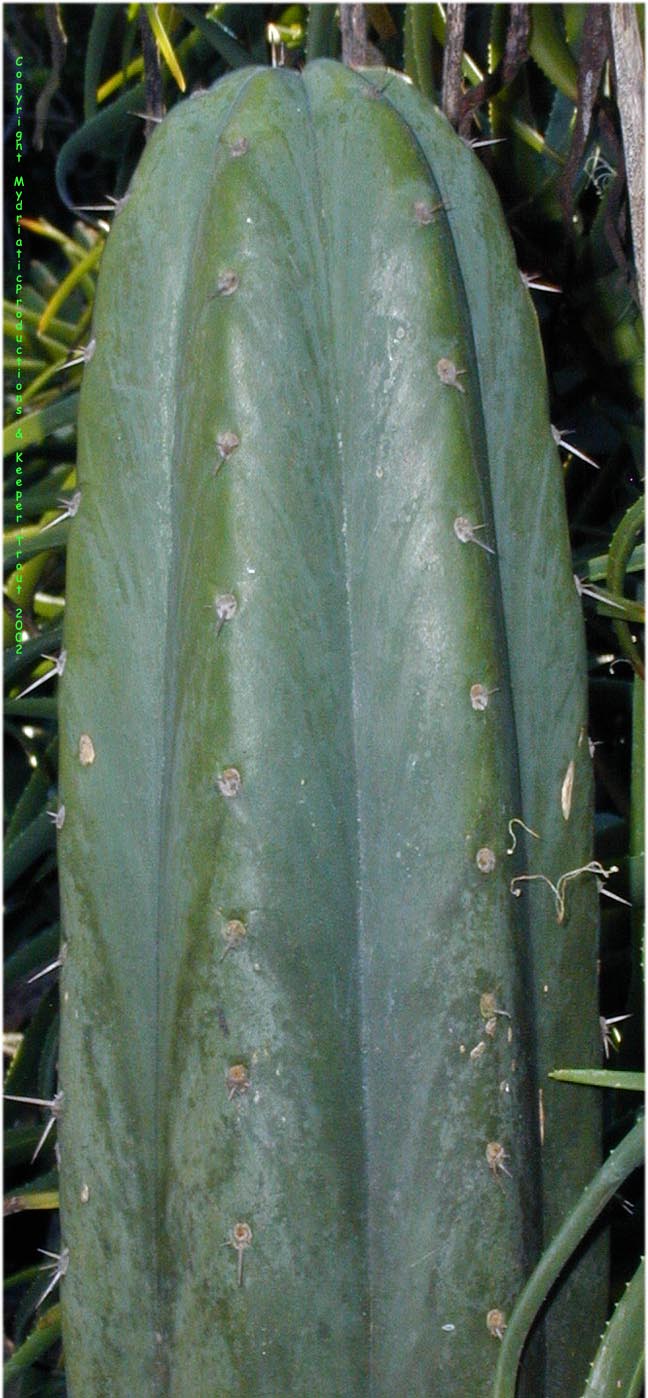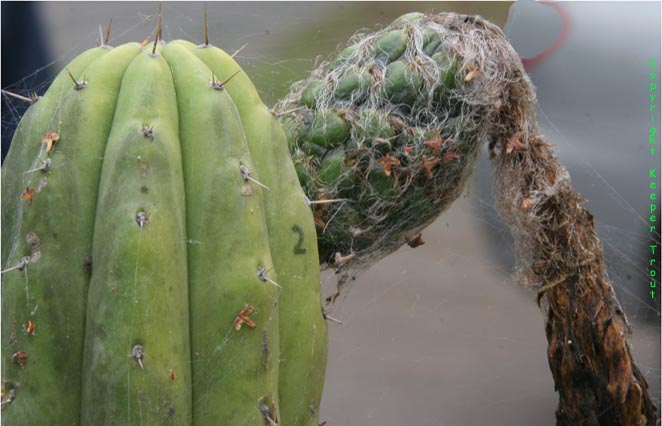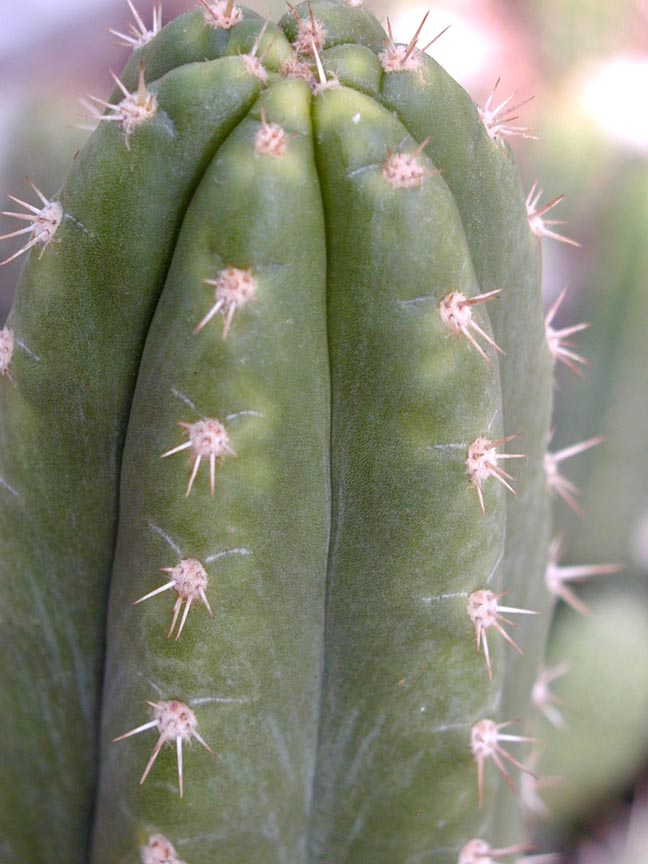Some more Trichocereus that were still at NMCR in 2010:
from poco albiflorus through thelegonus.
This is the final photo set of our 1 August, 2010 visit to New Mexico Cactus Research.
The featured image above illustrates how the cacti had overgrown some of their tags. Many of the plant tags were in rough shape, some were missing completely, some were missing a part of the tag and some had become illegible.
More images illustrating the new growth on all of the cuttings which Horst kindly provided will be coming in the future.
Trichocereus poco albiflorus
From Cuchu Ingenio, Bolivia. Tag also had the note “possibly Argentina”
Seeds had been collected by “DM” and were obtained by NMCR 4/1977, Horst planted them in April 1980.
Now lumped with Trichocereus tarijensis.
Trichocereus riomizquiensis
FR856 type from Chuyllas, Bolivia (Rio Mizque).
Seeds had been obtained from Riviere de Carault in November of 1972 and were planted on the first of July in 1980 by Horst.
Trichocereus rubinghanus (I am presently unable to locate this name.)
Grown from seeds obtained from Riviere de Carault but missing a tag.
Trichocereus scopulicolus
FR991 grown from seeds that Horst obtained from Riviere de Carault. They were planted in 1980. Date of seed acquisition is unknown due to partial tag destruction.
Trichocereus spachianus forma brevispinulus
Grown from seed provided by RIV. Horst described this as being an old form which is present in European nurseries.
Trichocereus strigosus
Seeds were obtained from “Lopez” in June 1976; they were planted in July of 1980.
Trichocereus terscheckii
“Cardon Grande” from Argentina. Seeds came from “Lopez” in February 1976; Horst planted them July 1980.
Trichocereus thelegonus
These production mothers were grown from seeds that NMCR acquired from Field in February of 1976. (This is also the featured image on this page.)
This is what they can become when not repeatedly cut for sale.
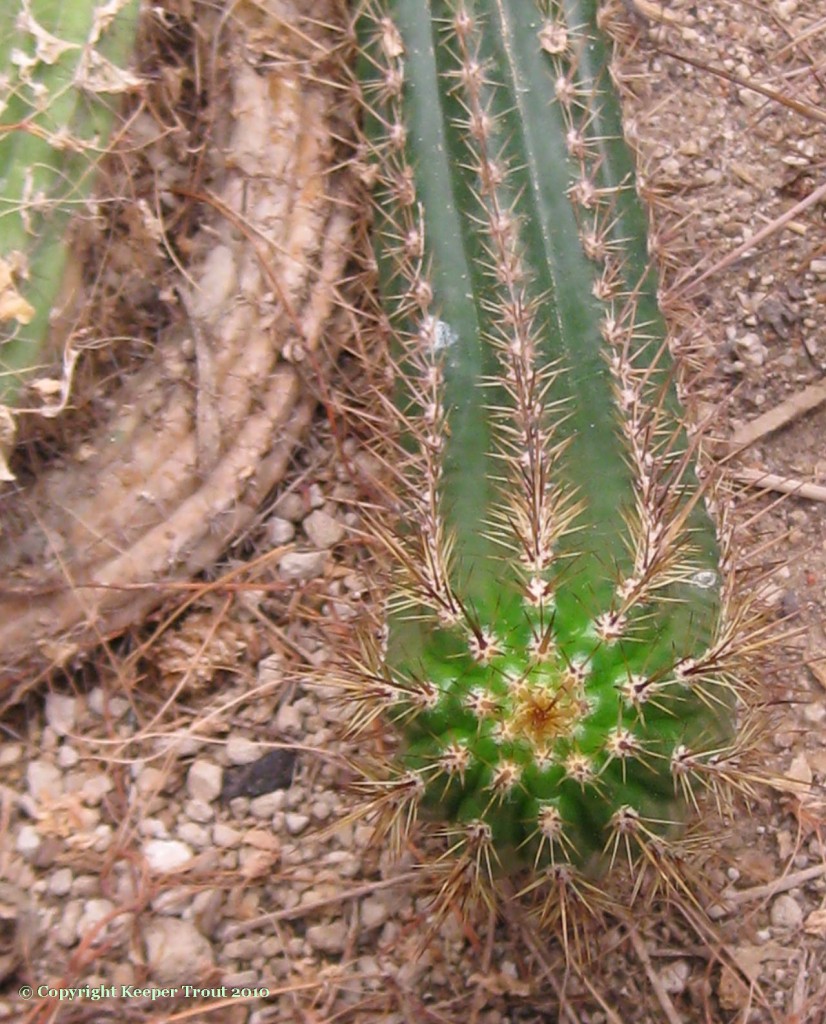
Unclear Trichocereus
This was lacking a locateable label.
My visit is divided as :
Visiting NMCR in 2010
A-H Ariocarpus – Hoodia
M-R Mammillaria – Ritterocereus
Trichocereus bridgesii – deserticola
Trichocereus macrogonus — pachanoi
Trichocereus poco — Trichocereus thelegonus (You are here)

